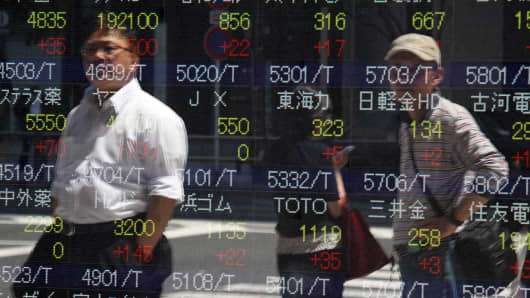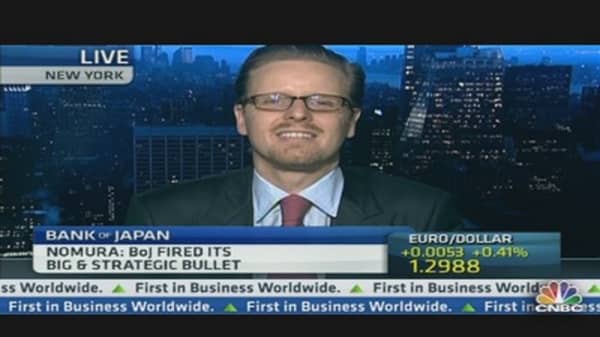As Japan finishes a tough week, options traders are loading on the bearish bets.
One of the most actively traded equity options on Friday are the Japan Index ETF September 13-strike calls. These are being sold aggressively for $0.13, with more than 32,000 trading as of 12 p.m. EDT. The iShares MSCI Japan Index ETF (ticker symbol: EWJ) tracks the Japanese stock market, which has experienced unprecedented volatility this week, and this is a somewhat bearish bet that the EWJ will stay below $12.87 through September expiration.
At its highs on Wednesday, the EWJ was up 24 percent year-to-date, in a rally driven by the Bank of Japan's massive stimulus plan. But on Thursday, unexpectedly hawkish comments from Federal Reserve Chairman Ben Bernanke unsettled some traders. In addition, the Chinese Flash PMI came in lower than expected, and fell into contraction territory. This caused a run for the exits, and Japan's Nikkei closed down 7 percent on the day. On Friday, the volatility continued, with the index initially rallying 4 percent, only to fall 7 percent from its intraday high.
(Read More: Nikkei Goes for Wild Ride for Second Day)
A correction was long overdue in Japan, but the speed of the move has nevertheless caused some panicked selling. This appears to be the beginning of a volatile correction in the Japanese markets, but I would expect it to prove to be a fantastic buying opportunity by the end of the summer. The price action appears similar to that in the S&P 500 following the flash crash, which, in retrospect, provided a great buying opportunity in the weeks after.





